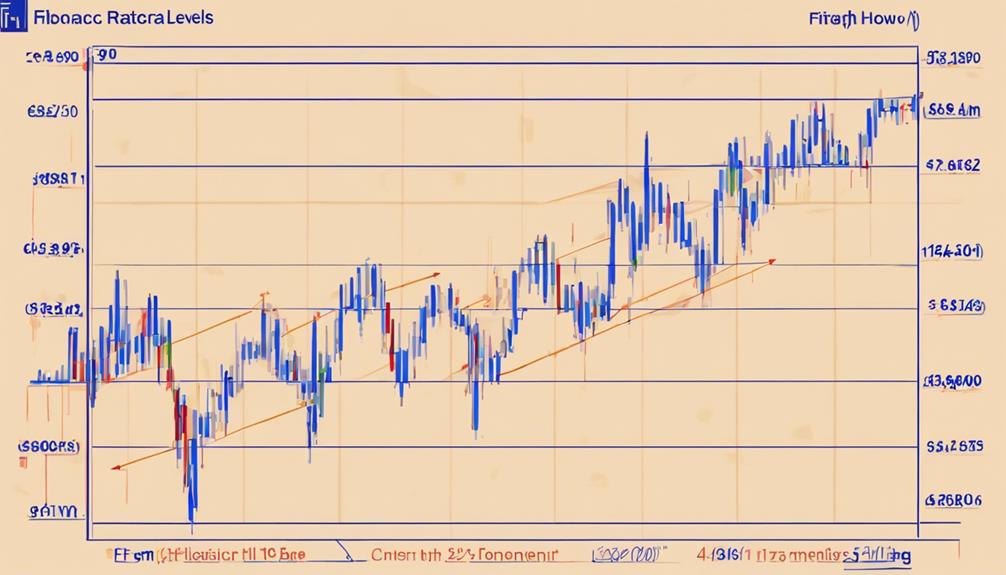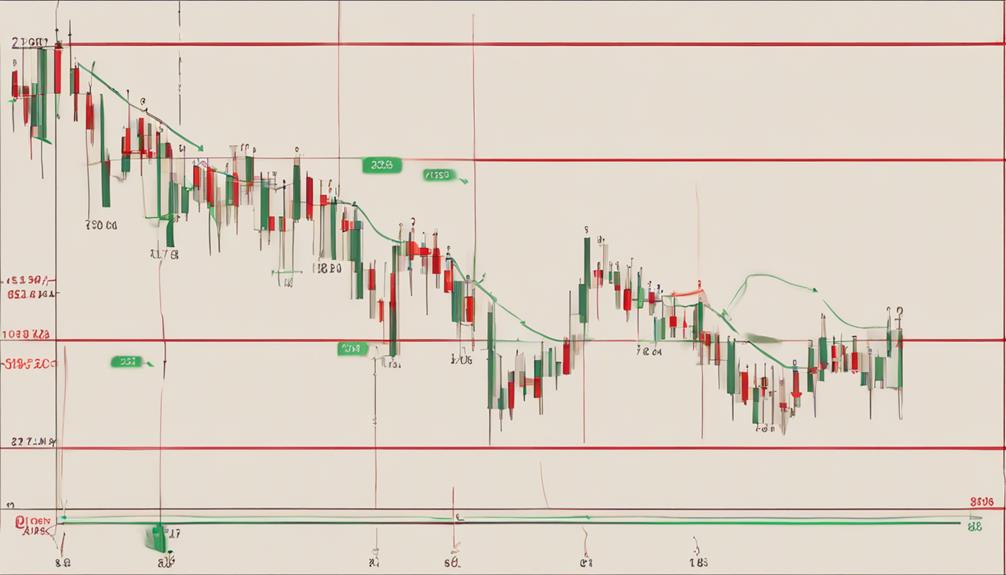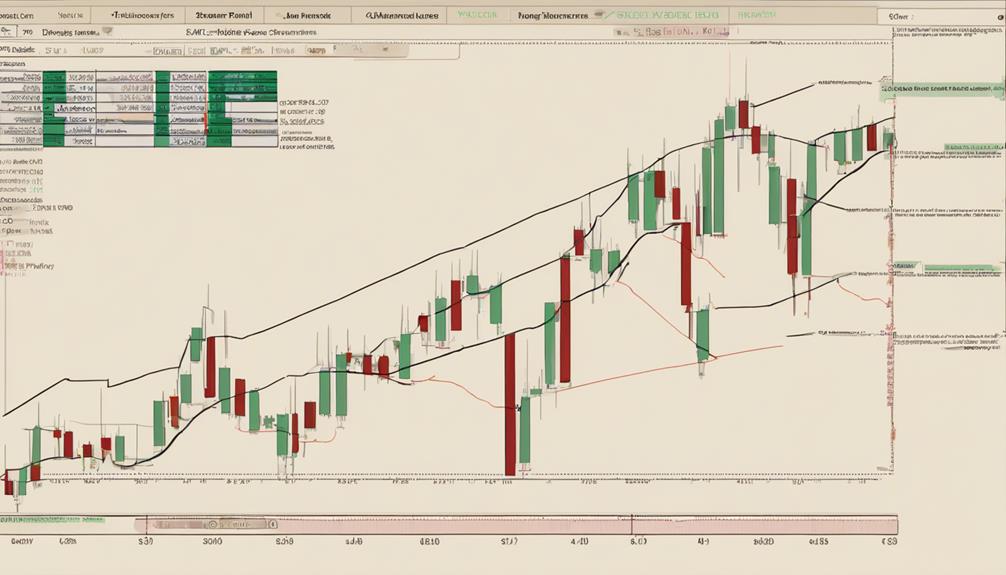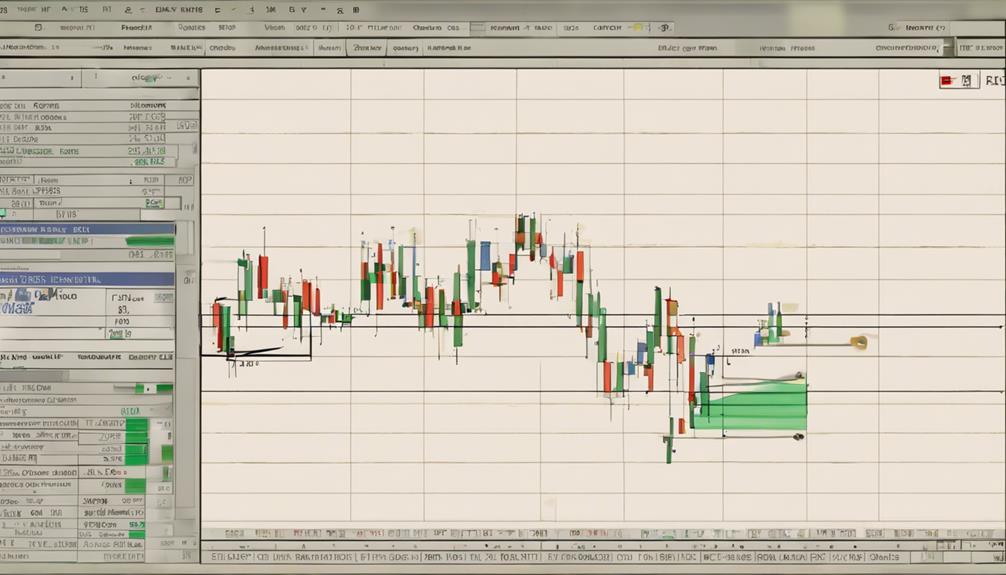If you've ever wanted to unlock the hidden secrets of market movements, understanding Fibonacci retracement levels is like having a map to predict potential price shifts. These levels, rooted in the renowned Fibonacci sequence, hold the power to unveil critical support and resistance zones.
But how exactly do these seemingly magical numbers influence trading decisions and market behavior? Stay tuned to uncover the intricacies of Fibonacci retracement levels and how they can be your guiding light in navigating the complexities of financial markets.
Understanding Fibonacci Retracement Levels
Fibonacci retracement levels offer traders precise static price references derived from the Fibonacci sequence to pinpoint potential support and resistance zones in a stock's price action. These levels, including ratios like 23.6%, 38.2%, 50%, 61.8%, and 78.6%, are crucial in technical analysis.
By drawing Fibonacci retracement levels between significant price points, traders can anticipate potential price reversals or bounces. Understanding these levels is key in setting entry and exit points, establishing stop-loss levels, and making well-informed trading decisions.
The Fibonacci retracement levels are named after Leonardo Fibonacci, an Italian mathematician, and have become a staple tool for traders worldwide. Utilizing these levels effectively can enhance your trading strategies and improve your ability to interpret price movements accurately.
Calculating Fibonacci Ratios

Derived from the famous Fibonacci sequence, calculating ratios is a fundamental aspect of understanding Fibonacci retracement levels in technical analysis. The key Fibonacci ratios, including 23.6%, 38.2%, 50%, 61.8%, and 78.6%, are crucial in determining potential support and resistance levels.
These ratios are based on dividing a number in the Fibonacci sequence by the number following or preceding it. For instance, dividing 21 by 13 gives the common retracement level of 61.8%.
Fibonacci retracement levels are essential in pinpointing significant price points on a chart and are used in creating Fibonacci retracement lines. By applying these key ratios, traders can analyze price movements and make informed decisions in trading based on the sequence of numbers known as Fibonacci numbers.
Applying Fibonacci Retracement in Trading

When applying Fibonacci retracement in trading, traders draw lines between significant price points to pinpoint potential reversal points or trend continuation levels. Understanding how to utilize Fibonacci retracement levels effectively can enhance your trading strategy.
Here's how to apply Fibonacci retracement in trading:
- Identify Support and Resistance Levels: Fibonacci retracement levels help traders identify key support and resistance levels in the market.
- Determine Entry and Exit Points: Traders use Fibonacci ratios to determine optimal entry and exit points based on potential price reversals.
- Implement Risk Management Strategies: Fibonacci retracement levels assist in placing stop-loss orders effectively, aiding in managing risks associated with price movements.
Comparing Fibonacci Retracements and Extensions

Comparing Fibonacci retracements and extensions allows traders to assess potential reversal levels within a trend and project price targets beyond the initial move accurately. Fibonacci retracements are typically used to anticipate pullbacks or corrections, serving as valuable entry and exit points for traders.
On the other hand, Fibonacci extensions help in setting profit targets and identifying areas where prices may extend in the future. These extension levels are crucial in determining possible support/resistance levels and understanding the full scope of a price movement.
Limitations of Fibonacci Retracement Levels

Fibonacci retracement levels present traders with valuable insights into potential price movements, but it's essential to recognize their limitations to make informed trading decisions. When considering Fibonacci levels, it's crucial to understand the following:
- False Signals: These levels aren't infallible indicators and can sometimes provide misleading signals.
- Subjective Analysis: Relying solely on Fibonacci retracement levels for trading decisions may not always accurately predict price movements due to the subjective nature of their analysis.
- Market Sentiment Impact: Market sentiment can override Fibonacci levels, affecting their effectiveness in anticipating price reversals.
Remember to use Fibonacci retracement levels in conjunction with proper risk management strategies to enhance trading decisions and mitigate potential losses.
Can I Learn Fibonacci Retracement Levels from Online Courses?
Yes, you can learn about Fibonacci retracement levels from online courses for Fibonacci retracement. Many platforms offer comprehensive courses that cover the basics, advanced strategies, and practical application of Fibonacci retracement levels in trading. Whether you’re a beginner or experienced trader, these online courses can provide valuable insights and knowledge.
Frequently Asked Questions
What Are the Complete Fibonacci Retracement Levels?
In trading, the complete Fibonacci retracement levels encompass 23.6%, 38.2%, 50%, 61.8%, 78.6%, and 88.6%. These levels aid in pinpointing potential support and resistance zones, guiding your decisions and strategies effectively.
What Are the Most Reliable Fibonacci Retracement Levels?
When trading, focus on 38.2%, 50%, and 61.8% Fibonacci levels for reliable reversals. These key levels signal potential price changes. Watch closely for reactions at the 61.8% level. Combining indicators enhances accuracy in predicting reversals.
What Is the Correct Fibonacci Retracement Level?
To determine the correct Fibonacci retracement level, identify key percentages like 23.6%, 38.2%, 50%, 61.8%, and 78.6%. These levels pinpoint potential support and resistance areas in stock price movements, aiding in strategic trading decisions.
Do Professional Traders Use Fibonacci Retracement?
Yes, professional traders heavily rely on Fibonacci retracement levels to gauge support and resistance areas, anticipate price reversals, and determine entry or exit points in the market. It's a common practice among seasoned traders.
Conclusion
You've now mastered the art of Fibonacci retracement levels. Congratulations, you're one step closer to becoming a trading genius.
Remember, these magical numbers aren't infallible, but hey, neither are you. So go forth, armed with your newfound knowledge, and conquer the financial markets with the precision of a Fibonacci sequence.
Just don't forget to breathe, because even math can't predict everything. Happy trading!
